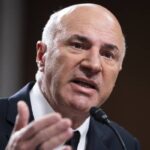You’ve spent days researching and you think you’ve finally found the perfect car for you. You’re ready to drive it off the lot and into freedom. There’s just one slight snag: You can’t drive your dream car anywhere because you don’t have auto insurance.
Auto insurance is one of those pesky financial necessities in life. Although most of us don’t enjoy shopping or paying for it, it is a legal requirement if you want to be able to drive that car.
This article is a primer on everything you should know before you choose auto insurance in Canada. We’ll take a look at the different types of coverage available, factors that influence premium costs and the important details you should consider before you buy.
How does car insurance work?
Car insurance works a lot like home insurance, where the premiums you’ll pay to an insurance company are based on the carrier’s estimated annual cost of covering your vehicle.
Premiums are calculated based on several factors. One of them is how much the insurance company believes it will have to pay out in claims in the coming year. You’ll pay your car insurance company premiums on a monthly or annual basis in exchange for taking on your vehicle’s risk.
The insurance company then collects all the premiums from the drivers it protects and places it into one large pool to cover the losses from customers filing for claims throughout the year.
You’re covered for the losses in your car insurance contract only, which means it’s important to review you policy in detail before signing up to make sure you understand the extent of your coverage.
However, car insurance contracts aren’t always the easiest to understand. If you need clarification about your coverage, it’s a good idea to speak with your insurance representative to get a better understanding.
Who needs auto insurance?
Simply put, if you’re a motorist in Canada, you’re required to have auto insurance, and skimping out on it can lead to a major fine. Ontarians caught without auto insurance, for example, are looking at a fine between $5,000 and $50,000 for a single offense, and they could also have their driver’s license suspended and car impounded.
But that’s not all. Anyone found to be driving without valid auto insurance could be considered a high-risk driver, and as a result might face higher auto insurance premiums or be refused auto insurance in the future. If an uninsured driver is involved in a collision and found at fault for an accident causing injury or death, they could be found personally responsible for the injured party’s medical costs and any other losses.
What are the different types of car insurance available?
The minimum level of auto insurance required in Canada varies throughout the country, so it’s important to familiarize yourself with your province or territory’s requirements to ensure compliance.
Third-party liability coverage
The most basic car insurance is third-party liability coverage. This protects you, the driver, against paying for damage you cause to someone’s property. It also protects you if someone else is killed or injured as a result of an at-fault collision committed by you. The minimum coverage varies by province, but at the very least it should cover the medical costs of anyone injured in an accident: Third-party liability coverage is mandatory in Canada.
Collision coverage
In addition to protecting you from third-party liability, collision coverage also covers you if you hit something other than a vehicle, such as an embankment or guardrail. It’s fairly common for this policy to also protect you if you’re involved in an accident with a motorist who isn’t insured. This broader level of coverage typically costs more than liability.
Comprehensive coverage
As its name suggests, comprehensive coverage provides the broadest range of protection. Not only does it usually cover medical and collision-related damages, but it may also protect you in the event of theft and floods. However, this comes at a cost, as comprehensive premiums are usually the highest among the three.
Specified perils and all perils
Two other optional types of auto insurance you might consider signing up for are specified perils and all perils. As its name implies, specified perils coverage protects you against specific damage to your vehicle, like theft or attempted theft, and weather-related damage, such as fire, lightning, windstorms and earthquakes. Meanwhile, all perils coverage combines the protection you receive under collision and comprehensive coverage.
It’s important to weigh the amount of coverage you need with the premium you’ll pay in order to find the auto insurance coverage that’s right for you. A lot of us like to shop for the option with the lowest premium, but as the old saying goes, you get what you pay for. When shopping around, it’s important to also look at the amount of coverage you’ll receive to ensure it’s sufficient. The last thing you want is to end up paying a lot of money out of pocket if you ever need to file a claim.
Is auto insurance different from province to province?
Although auto insurance is mandatory for drivers in all provinces across the country, there are key differences depending on where you reside, including the rates that are available to you.
For years, Ontario has consistently had the highest auto insurance rates in the country. Although it’s hard to pinpoint the exact reason why, reports have cited insurance fraud and auto theft as the main reasons. Meanwhile, Quebec has consistently had among the lowest auto insurance rates in the country over the years.
In most provinces, your only choice is to get auto insurance from private companies. That being said, there are some provinces that offer private and public auto insurance coverage, such as B.C., Manitoba and Saskatchewan, plus the option of extra coverage from private companies.
However, Quebec falls into its own category, as public insurance protects you in the event of injuries or death, while private companies protect you for property damage.
What factors influence the cost of auto insurance?
If you’re anything like me, you may have a tendency to complain that your auto insurance premiums are too high. But your premium might make more sense if you understand how it’s calculated. Insurance companies set its prices based on a number of factors, including:
Vehicle make, model and production year
Your vehicle’s make, model and production year has major bearing in premium costs. For example, sports cars are typically more expensive to insure compared to sedans. This boils down to two factors: Sports cars not only tend to have a higher retail price, but they’re also more likely to be involved in a collision.
Driving history
Your driving history is another big factor. If you’ve never received as much as a speeding ticket, you could save thousands of dollars in auto insurance premiums compared to someone who has several speeding tickets and has been involved in collisions.
Demerit points
Incurring demerit points for driving infractions, such as dooring a cyclist or speeding, can impact the auto insurance premiums you’ll pay, as well. Demerit points won’t affect your premium immediately, but they will when the policy comes up for renewal, as long as your insurance company checks your driving record.
Place of residence
A lot of motorists aren’t aware that where you live can have a big impact on their auto insurance premiums. Some neighbourhoods have a history of filing more claims than others. If your area has a lot of break-ins and collisions, be prepared to pay for it.
Age and gender
Two more factors that influence car insurance premiums are the driver’s age and gender. Insurance is one of the few industries where companies can legally discriminate based on age and gender in pricing. All things considered, you’ll generally pay less for auto insurance the older you are—at least until you hit your golden years, when you’ll be forced to fork over more for premiums. Men generally pay higher auto insurance premiums than women, as they are known for exhibiting riskier driving behaviour.
How can drivers minimize what they pay in auto insurance?
Who isn’t looking to pay less for your auto insurance? Here are some simple ways to cut down on what you pay and free up room in your monthly budget for savings or investing.
Bundle and save
Are you a homeowner? By bundling your home insurance with your auto insurance (using the same insurance company) you can expect to receive a discount. Typical discounts range between 5% and 25% on the overall cost of both insurance products.
Raise your deductible
Your deductible is the amount that you’re required to pay out of pocket before your insurance company will chip in in the event of a claim. By choosing a higher deductible, you could save a substantial amount on your monthly premiums. Typical deductions range from $500 to $5,000 — the higher the deductible the cheaper your insurance premiums. Just be sure that the deductible you select is manageable, should you need to make a claim. Inquire with your insurance company and check out the deductible options that are offered.
Shop around and save
Many of us have our car insurance on auto pilot; we’re too busy to allocate time toward shopping around and simply renew with our existing insurance company. While that may be convenient, it’s not necessarily cost effective. By shopping around, you’ll have the peace of mind that you’re getting a good rate and adequate coverage.
How to get insurance for a car in Canada
You can buy auto insurance from a licensed insurance broker, which is someone who offers insurance from a number of different insurance providers. The broker will research the market for you to find the carrier with the coverage you’re looking for at the best rate.
Another choice is to use an insurance agent. They typically represent a single insurance company, so it might still be a good idea to do your own additional research into possible alternatives to what the agent suggests. Similar to insurance agents are direct writers, who work for carriers that sell directly to consumers.
A third choice is to shop online on your own behalf. The upside to this option is that you feel like you’re in the driver’s seat. The downside is that insurance can be complicated, so you’ll probably want to speak to a human being at some point.
This article provides information only and should not be construed as advice. It is provided without warranty of any kind.








